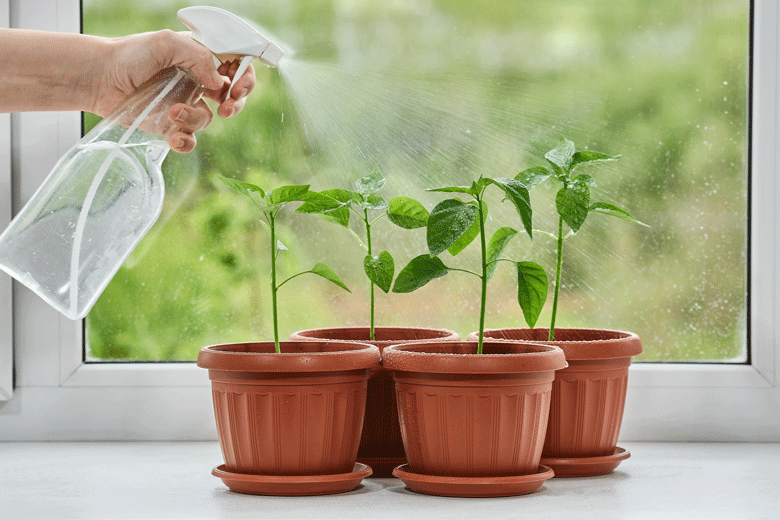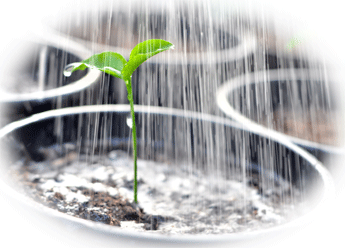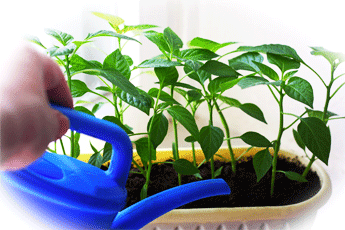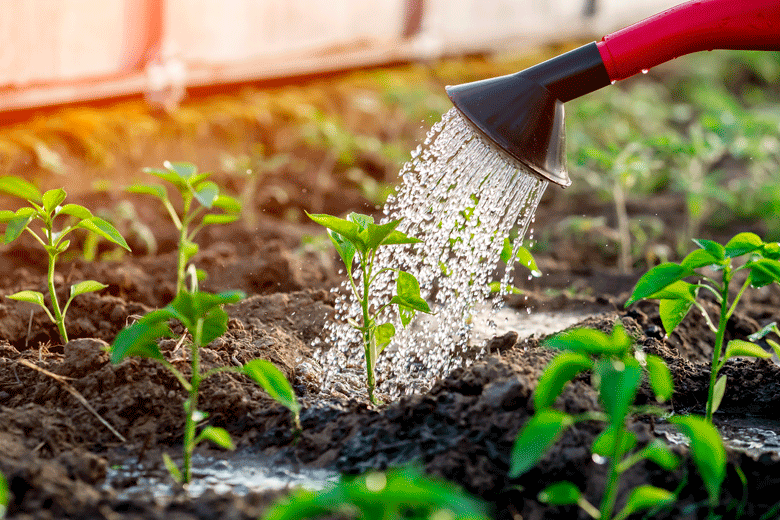Collapsed seedlings
Overwatering Chillies is something to be avoided at the best of times. However. when checking my seedlings a couple of days ago and finding a couple had fallen over, I said ” here we go again. This has happened to me before. My first thoughts were “I hope this isn’t damping off.” If it had been, I would have been seriously alarmed.
Damping off is a disease where seedlings have been attacked by one or another pathogens that cause their stems to rot. These nasties are rapid killers that can kill off a tray of seedlings in no time at all.  What’s more, if not effectively dealt with, damping off can transfer to all seedlings in immediate proximity. It has the potential to wipe out everything
What’s more, if not effectively dealt with, damping off can transfer to all seedlings in immediate proximity. It has the potential to wipe out everything
The seedlings were in wet soil. This is just inviting the nasties mentioned to come visiting. These nasties include the Rhizoctonia fungi, Phytophtora, Fusarium, and the water mould Pythium . These pathogens can spread from seedling to seedling through shared potting media and irrigation water. In my case, shared irrigation water could have posed a risk. I keep my seedings in seed trays that share watering. If this was the start of damping off, my seedlings were in danger. The situation did not look good at all!
I could have kicked myself. It is one of the first lessons I learned when I began growing Chillies. Seedlings shouldn’t be given too much water. I constantly try to remind myself about this. Overwatering is not good for Chillies, full stop. Chillies don’t like too much water when they are fully grown. They like overwatering even less when they are seedlings (no more emphasis required)
Optimum conditions

Moist is best
The optimum growing conditions for seedlings is that the medium they are started in should only be kept moist and warm. Some growers (me included, in the past) even go to the extent of using only fine mist to water seedlings, for precisely this reason. Lukewarm water is sprayed onto the seedlings with a fine mist sprayer twice a day. In doing so, the amount of water given to seedlings is limited to the minimum they need for survival. It works well, but is a fine balancing act that requires you to be on top of the game all the time.
It works well, but is a fine balancing act that requires you to be on top of the game all the time.
I obviously wasn’t on top of mine. Earlier this year , when I used his method, some of my seedlings got too little water and died.
There is a delicate balance that needs to be achieved. Seedlings don’t like being too wet; they can’t take like being too dry either. Give seedlings too little water, and they will wither. To avoid this reoccurring, I changed the way I water my seedlings. I changed from the fine mist method to bottom watering. Bottom watering made a lot of sense. Not only was it a way of ensuring that the seedlings had a constant supply of water, but it also meant avoiding pesky fungus gnats. Fungus gnats in themselves increase the risk of damping off. It seemed too good to miss.
Changing to bottom watering

Overwatering seedlings
In doing so, it seems I have unfortunately gone from one extreme to the next. Let me explain. Since these Chillies have been potted on I, have kept them in seed trays under grow lights. They are currently in two-inch plastic and fibre pots. To keep them watered, I have been pouring water into the bottom of the trays. This is called bottom watering. Nothing wrong with that, except it appears I have been adding too much water into the trays. I have been half filling them. The compost in the pots sucked up the water and became saturated.
too much water into the trays. I have been half filling them. The compost in the pots sucked up the water and became saturated.
The nett effect is that compost became really wet indeed. The compost absorbed all it could, and there was still water remaining in the seedling trays. These are the perfect conditions for dampening off (particularly if the water is cold). The pathogen that sauce damping off thrives in cold water and conditions where there is not enough sunshine.
Luckily, the seedlings are under grow lights, but they were in compost that was far too wet. To rectify this, I poured the remaining water out of the trays. The pots were then placed back. I hoped the compost would now dry out without any more ill effects on the seedlings. I had my fingers crossed. It would have been a huge disappointment that all the care and effort I have taken to bring these seedlings where they are came to nought. Only time could tell if this would work.
So how did I make this mistake?

Listen to the advice given
It is incredible how sometimes you can mix up advice when growing Chillies. As mentioned, I have been aware for a while now that seedlings don’t like too much water. However, somewhere along the line, I also learned about bottom watering. Bottom watering is recommended above watering seedlings from the top. By watering from the top, the surface of the soil becomes too wet. This encourages fungus gnats and should be avoided at all costs.
The advice was that seedling trays with the pots in them should be filled about halfway. What I didn’t quite grasp, though, is that this doesn’t apply to baby seedlings. The seedlings should be fairly big by the time you start pouring so much water into their trays. Before they develop their first set of true leaves, seedlings need to be handled with kids gloves on the watering front. Only when their root systems become well developed, are they able to deal with so much water. Not that they should be given too much water, even after that.
Hopefully I have finally learned this lesson. It certainly seems to have taken a long time to sink in! From now on, I definitely won’t be adding so much water into the trays. I will continue bottom watering. Only. I will now add an inch at most. This should be more than enough to ensure that soil remains moist.
So was it damping off?

Lucky this time
Have my seedling got damping off ? I doubt it. I am relieved. I believe by giving the seedlings too much water, they got drowned rather than getting infected by this disease . I say it’s not dampening off because, bar a couple of seedlings dying, most have recovered after the compost dried out. I propped up some seedlings using fresh compost. This had the dual effect of keeping them upright. but also that new compost absorbed some of the excess moisture. A couple of days later, they are well on their way to recovery.
Had the stems been black or brown and withered, and/or there had been white fungi on the top of the soil, I would have been more worried. These are classic symptoms of damping off. Other signs are the leaves and stems being mushy. Also sometimes seed germinates, but come out discoloured. Phew, luckily, none of my seedlings exhibited any of these symptoms. I believe I am okay
Final note
Damping off is something you want to avoid at all costs. Once seedlings have been affected by it, they will never recover. The seedlings will never mature to vigorous plants, and in later life will be susceptible to root and crown rot. Damping off is not something that can be cured. The best thing is to take measures that prevent damping off in the first place. In addition to not giving seedlings too much water, there are other things that can be taken to prevent it happening in the first place. What you can do to prevent damping off is the subject of my next post.

